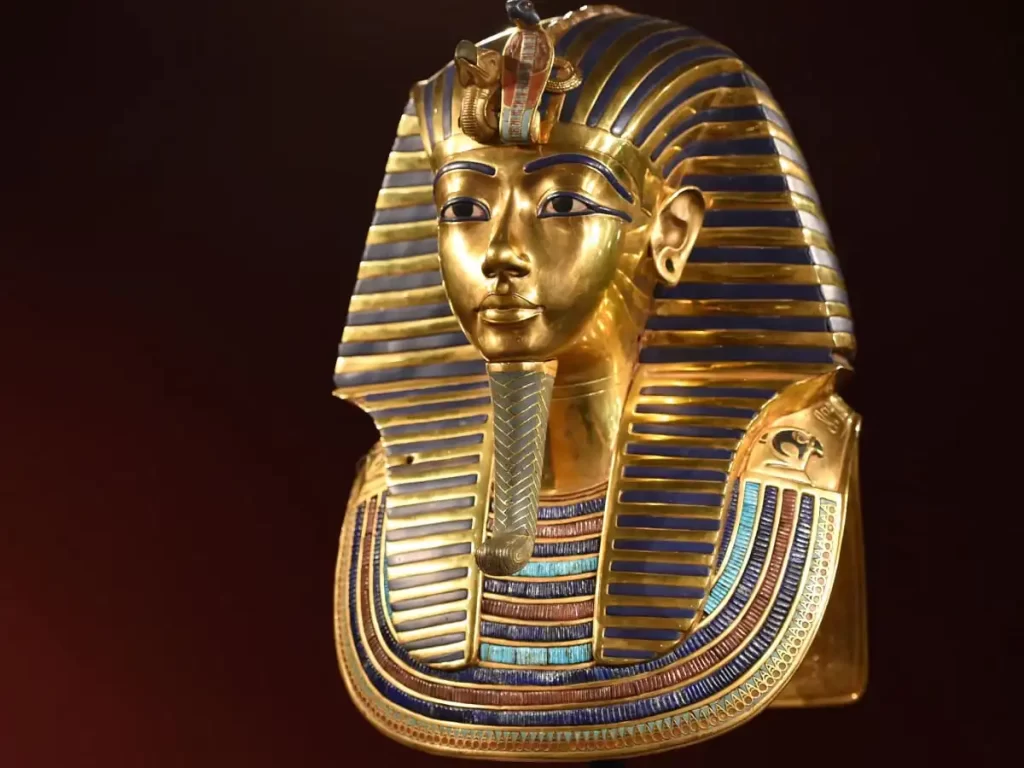
King Tutankhamun
[ez-toc]
Who is King Tutankhamun?
Egyptian ruler King Tutankhamun reigned from 1334 B.C. to 1325 B.C. during the 18th Dynasty of the New Kingdom (1570-1050 BC). As the living embodiment of the god Amun, he is also known by the name Tutankhamun. Being only 9 years old when he succeeded his father Akhenaten as ruler of Egypt, he is regarded as one of the youngest rulers to have ever governed ancient Egypt. After his father attempted to impose monotheism by combining the several gods into one god, “Aton,” the sun disc god, he temporarily controlled Egypt. In addition, he relocated Thebes’s capital to his new city, the Horizon of Aten (Amarna). Some of the revolutions that took place under Tut’s rule included Tell El Amarna, which called for the old gods to return once more. Ankhesenpaaten, whose name means “Her Life is from Aton,” was his wife. Tut was the son of Akhenaten, and Lady Kiya was “one of Akhenaten’s wives.” She was his half-sister from Akhenaten and Nefertiti.
When Was the Tomb of King Tutankhamun Discovered?
King Tutankhamun didn’t lead the life of a king like many of his predecessors did, and he died young at the age of 19 without leaving any notable legacies. His enormous, extremely well-preserved tomb, which was found in the Valley of the Kings in 1922, contained his mummy and a thousand priceless artifacts, all of which were displayed for the first time in 2010 in the Egyptian Museum before being moved to the new, larger museum that will open soon. He was remembered more for his death than for his life. It displays all of the valuables discovered in his tomb, including his renowned giant coffins, his golden mask, and others. That’s why a lot of tourists prefer to visit it as a part of their trip to Egypt.
How the Tomb of King Tutankhamun Was Discovered?
The relationship between a talented Egyptologist and archaeologist named Howard Carter and the 5th Earl of Carnarvon, which resulted in the most well-known archaeological discovery of all time—the Tutankhamen Tomb—in 1914—is the source of the magnificent discovery of the King’s Tut tomb. Carter was employed by Lord Carnarvon to find King Tutankhamun’s long-lost tomb. After spending several years looking for the tomb without success, Lord Carnarvon hired Carter because of his experience managing excavations at the Hatshepsut temple in Luxor and his use of cutting-edge archaeology and recording techniques. They both thought that the world had just forgotten about Tutankhamun’s tomb and that it was time for the world to start remembering him once more. A sunken staircase was found leading to a mud-plastered doorway bearing King Tut’s royal seals after clearing the debris and beginning a slow, careful excavation on November 4, 1922, when the young water boy accidentally stepped on a stone that appeared to be the top of a set of steps cut into the bedrock.
What is King Tut Pharaoh’s Curse?
The “Pharaoh’s Curse,” a mystic phenomenon that claims that anyone who disturbs the Pharaoh’s ultimate repose would meet his final fate, attracted increasing interest from people from all over the world. Only eight of the fifty-eight people present died within a few years, and the rest lived very peaceful lives, such as Howard Carter, who died in 1939 at the age of 64. Lord Carnarvon passed away five months after the discovery which gave rise to numerous supernatural theories that remain only theories. According to many academics, the curse is nothing more than a network of traps containing lethal gas, chemical, bacterial, or even radioactive material.
Death of King Tutankhamun
King Tutankhamun’s demise remains a mystery to this day because it was unusual for pharaoh kings to pass away at such a young age and because he had so many illnesses and disabilities. After years of investigation, scientists and researchers discovered that King Tutankhamun had a hole in his skull and a fracture in one of his legs, indicating that he had either been in an accident or was most likely murdered.
What Makes King Tutankhamun Tomb So Important?
The King Tut tomb is the best-preserved and most complete tomb in the annals of Egyptian archaeology. Tut’s magical golden face mask, the inner coffin of three sarcophagi made of 450 pounds of solid gold, his dagger made from a fallen meteorite, an archery bow, a golden chariot, and other amazing items were among the approximately 5.398 items that were discovered when the tomb was first opened on February 16, 1923. It took Carter ten years to fully document these items. Every media outlet and press organization on the planet reported on its discovery, grabbing the attention of everyone and igniting a strong interest in the field of Egyptology that has persisted to the present day.



